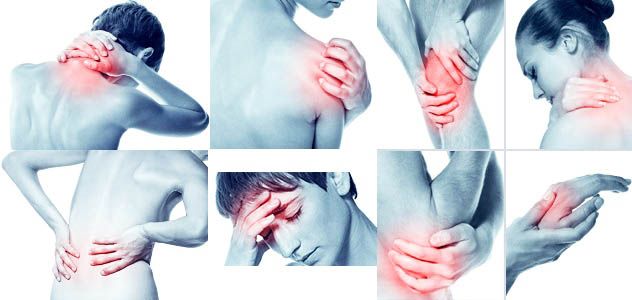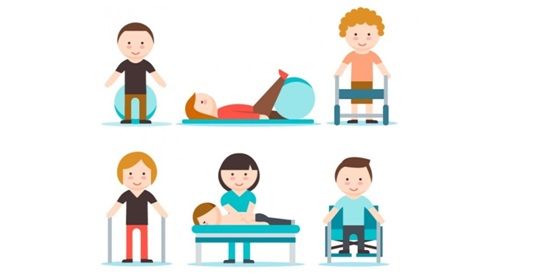Who is the physiotherapist?
On many occasions the physiotherapist in Dwarka is identified with that person who is dedicated to giving massages to treat muscle ailments and injuries; However, physiotherapy is a profession, as stated by the WHO, covers a set of therapeutic techniques that go beyond massage therapy and muscle treatment. Physiotherapy is a multidisciplinary profession that can act in different fields of medicine, such as traumatology, neurology, pediatrics, cardiology, dermatology, geriatrics or mental health, which often makes it part of a team with other specialists within which it enjoys great independence and professional capacity. According to World Confederation for Physiotherapy (WCPT), the physiotherapist is qualified to:
- Perform a comprehensive examination and evaluation of the patient.
- Evaluate the results of the test or diagnosis and make clinical judgments.
- Determine when patients should be referred to another health professional.
- Implement an intervention or treatment program.
- Determine the result of the treatment.
- Make recommendations for self-care.
Physiotherapists work in hospitals, nursing homes, research centers or clinics, both in primary care and in specialized medicine; In addition, they can also exercise their profession freely in day centers, sports clubs, associations of patients, gyms or through home care.
Techniques used in physiotherapy
The techniques used in physiotherapy in Dwarka are multiple and varied, although a classification can be made according to the tools and means used.
Manual therapy
One of the main tools of physiotherapists are their own hands, so there are a number of techniques that can be included in manual therapy:
1. Massage therapy
It includes different massage techniques or modalities, such as therapeutic massage, sports massage, connective tissue massage or cryomassage (cold application) and techniques such as therapeutic manual lymphatic drainage or neuromuscular manual techniques.
2. Kinesitherapy
Healing method based on active or passive movements of the body or a part thereof. This is achieved by applying an external force that will produce a movement without the individual performing a voluntary muscular contraction. It is indicated in processes where joint mobility is compromised.
3. Orthopedic manual physiotherapy
It focuses on the diagnosis and treatment of musculoskeletal injuries (hip, shoulder or knee injuries and neck and back pain).
4. Manual methods of reeducation of postural behavior
It consists of performing stretching exercises, called postures , that take care of the joints and eliminate the discomfort derived from contractures and muscle blockages, spinal deformities (scoliosis) or sequelae of trauma.
5. Analytical stretching
Therapeutic maneuvers whose purpose is to stretch shortened soft tissue structures to increase the range of motion. This practice is indicated in muscle contractures, burns and scars or in prolonged immobilization.
6. Neurological physiotherapy
It is based on the set of therapies to treat nervous system conditions in order to educate or re-educate postural tone, synergies, and pathological neuromotor patterns. It is indicated in brain lesions (Parkinson’s), peripheral lesions (peripheral nerve paralysis), spinal cord injuries (spina bifida, multiple sclerosis, ALS) or childhood neurological syndromes.
7. Respiratory physiotherapy
It consists of the performance of a series of procedures for airway unobstruction, respiratory re-education, and re-adaptation to the effort with the aim of improving the functioning of the muscles of the respiratory system and the exchange of gases, as well as increasing resistance. Respiratory physiotherapy is recommended in cases of neuromuscular diseases such as dystrophies, multiple sclerosis or ALS, and also after surgical interventions.
8. Obstetric physiotherapy
It is a series of hypopressive myasthenic gymnastics exercises aimed at strengthening the pelvic floor. Its name comes from the fact that the exercises are performed in hypopress, that is, by canceling the pressure exerted by the diaphragm and abdominal muscles on the pelvic floor muscles.
9. Functional bandage and neuromuscular bandage
The functional bandage consists of the application of elastic or inelastic adhesive strips whose objective is to limit the movements that affect the damaged structures without limiting other movements. The neuromuscular bandage is made through cotton tapes with an acrylic adhesive that sells the muscle from birth to insertion. The goal is to elevate the skin to increase subcutaneous space and thus help decrease fluid extravasation to reduce inflammation and pain.
10. Diacutaneous fibrolysis
Technique that involves the application of hooks on the skin to alleviate the discomfort caused by the destruction of adhesions of the membranes that surround the muscles, such as aponeurosis; The hook helps to attach and fix these structures. Each hook has a different size and curvature to adapt to the reliefs of the body.

Physical agent therapy
The other type of tools used by physiotherapy specialists are those related to physical and natural agents :
1. Electrotherapy and ultrasonotherapy
They are techniques that consist of the application of electrical currents or ultrasound on certain parts of the body with the aim of enhancing neuromuscular action, improving trophism (development, nutrition, and maintenance of tissues) and acting as anti-inflammatory and analgesic.
2. Thermotherapy and cryotherapy
Therapeutic methods that use heat (thermotherapy) and cold (cryotherapy) to alleviate acute and chronic rheumatic pain and visceral cramps. Cryotherapy also serves as an anti-inflammatory and analgesic in lesions such as sprains, and also as a destructive method to treat skin tumors.
3. Hydrotherapy
Techniques that use water as a therapeutic method; include the Thalassotherapy (use of the medium and the marine climate) and hydrokinesitherapy (performing exercises in water). The hydrotherapy serves to reduce inflammation and pain, dilate blood vessels and relax muscles, besides having an antispasmodic effect.
4. Mechanotherapy and pressotherapy
Mechanotherapy refers to those treatments in which the use of mechanical devices is necessary, such as in patients with disabilities, patients in need of prostheses or orthotized children. The pressotherapy is carried out by means of a machine that makes a compressive massage through special legs that help expel excess fluid and improve circulation; It is indicated in the case of edema, varicose veins, and postphlebitic syndrome.
5. Magnetotherapy and phototherapy
Magnetotherapy consists in the development of a treatment through electromagnetic fields that acts to help eliminate contractures, it is antispasmodic and anti-inflammatory. Phototherapy is the treatment of injuries through the application of ultraviolet or infrared light; It is indicated in pathologies and skin diseases, such as acne, psoriasis, bedsores and physiological jaundice of the newborn.

